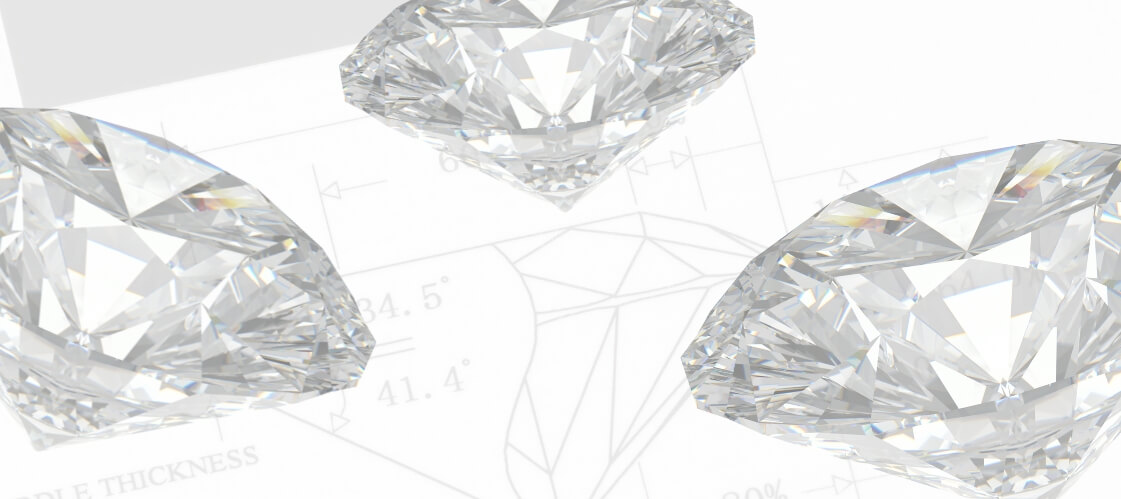Diamonds are beautiful gems in jewelry, but you should check if they’re authentic. One way to find out if you own real diamonds is by checking a Gemological Institute of America (GIA) report.
In this step-by-step guide, we’ll explain a GIA report, how to distinguish authentic reports from fake ones, and how to properly run a GIA report check. With our insights, you can confidently verify the report’s details and confirm the actual value of your precious diamond.
Keep reading to continue your journey towards authenticating valuable jewelry.
What is a GIA Report?
A GIA Report is a crucial document providing information about a diamond’s quality and characteristics. It sets the highest standard for reliability, consistency, and integrity in jewelry. By referring to a GIA Report, you gain valuable insights into the distinct qualities that make your diamond unique and genuine.
Features of a GIA Report
The GIA Report includes essential grading data, grading results, additional grading information, proportions, clarity characteristics, grading scales, and a QR code for added authentication. These features ensure you receive comprehensive and accurate information about your gemstone’s quality and characteristics.
Essential Grading Data
This section of the report shows the date when GIA assessed the diamond, the report number recorded in the GIA database, the shape and cutting style, and the dimensions of the diamond. This feature shows you the fundamental details that define your diamond’s characteristics.
Grading Results
Grading results consist of a diamond’s 4Cs: color grade, cut grade, clarity grade, and carat weight. In this section, each grade is ranked on a specific scale that determines the overall quality of the diamond. These combined grades provide a comprehensive understanding of the diamond’s characteristics, helping you decide on its value and quality.
Additional Grading Information
In a GIA report, experts review the diamond’s surface finish, symmetry for accuracy, and fluorescence for glow under UV light. Inscriptions, including the unique GIA number, are also noted. If any treatments, like laser drilling, are found, they will be explained in this section. These factors are vital for evaluating the diamond’s quality and uniqueness.
Proportions
This section contains a proportion diagram that shows the diamond’s accurate proportions. It helps experts assess the diamond’s structure, light interaction, brilliance, and sparkle. Generally, this part of the report offers detailed insights into the diamond’s visual appearance.
Clarity Characteristics
In this section, the plotted diagram estimates the diamond’s shape and cutting style. The symbols in this diagram indicate the type, position, and size of clarity characteristics. Overall, the details here are more specific and help you understand the diamond’s clarity.
Grading Scales
Lastly, this section shows the grading systems for a diamond’s color, clarity, and cut. These scales help assess the overall quality of the diamond so you can better understand its essential characteristics and make informed decisions when choosing a diamond.
Distinguishing Authentic GIA Reports from Fakes
Now that you understand the specific features of a GIA report, you should check if your reports are authentic. To do that, we recommend you follow these simple steps.
Look for the Security Features
Find the security features inside your GIA report. These features should include microprint lines, a security screen, and a hologram which prevent fraud and duplication.
Utilize the Report Check Service
On the GIA website, you can access the Report Check Service. All you have to do is input your unique report number, which will find the report information in the GIA database. Overall, this is a helpful step for verifying your report, so remember to keep a record of your report number for future reference.
Use QR Code Verification
GIA reports now feature QR codes for added authentication. Scan the QR code with your smartphone to verify your report and ensure the information matches the printed report. This method effectively identifies fake reports, as counterfeiters may find replicating the QR code’s unique data challenging.
How to Run a GIA Report Check
Below are the steps for running a GIA report check.
Obtain a GIA Diamond Grading Report
Jewelry stores are valuable resources when seeking a GIA Diamond Grading Report. They can assist in facilitating the process of obtaining this detailed report, ensuring authenticity, and providing valuable information about your diamond’s quality. By working with reputable jewelry stores, you can trust in the accuracy of the GIA certificate, further enhancing your confidence in the value and authenticity of your precious gem.
Understand the Contents of the GIA Diamond Grading Report
The GIA Diamond Grading Report covers essential factors about your diamond, so take a moment to review it carefully. If you have questions, consider consulting with a knowledgeable professional, such as a jeweler or an expert appraiser, to understand the document’s information better.
Get a Laser Inscription with a GIA Report Number
While the diamond is being assessed, get a laser inscription with a GIA Report Number, adding an extra layer of security. The GIA Report Number and inscribed data are permanently stored in the GIA’s database, adding authenticity to the gem. Laboratories that issued the certificates are the only ones that can inscribe the diamond, ensuring its credibility and value.
Additionally, for older GIA reports without QR codes, verifying if the report matches the stone is best done through inscription, as all stones graded by the laboratory have inscriptions. After checking the inscription, measure the stone; the measurements should match. Lastly, the stone plot should be examined, as all stones weighing more than 1 carat have stone plots included in the report.
Explore the World of Diamonds with Willyn Villarica Jewelry
Verifying your diamond’s authenticity is essential, and obtaining a GIA Report is crucial for understanding its unique characteristics and true value.
For precise diamond grading adhering to GIA standards, trust our team led by Ms. Willyn Villarica—an expert jewelry appraiser and licensed Graduate Gemologist from the Gemological Institute of America. As the sole member of the National Association of Jewelry Appraisers from the Philippines, her expertise ensures accurate guidance for your jewelry decisions, whether you’re selling, upgrading, or simply gaining more knowledge about diamonds.
Catering to clients around the globe, our expertise and commitment to excellence ensure that you receive personalized guidance and expert advice tailored to your specific needs and preferences. It’s important to note that while we offer our services worldwide, clients are responsible for covering all travel expenses.
Let Willyn Villarica Jewelry be your companion in exploring the world of valuable diamonds.
To schedule a diamond grading appointment, email us at admin@willynvillaricajewelry.com. You can also send inquiries through our Facebook page (Willyn Villarica Jewelry) or Instagram (@willynvillarica_jewelry).

